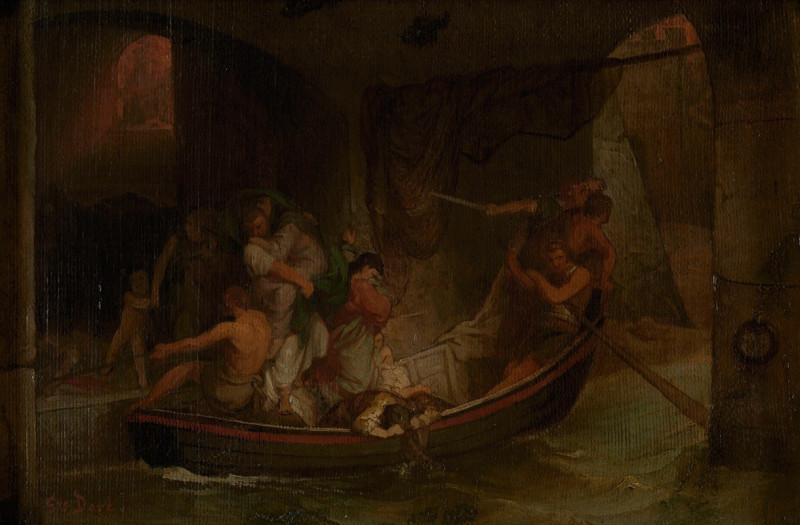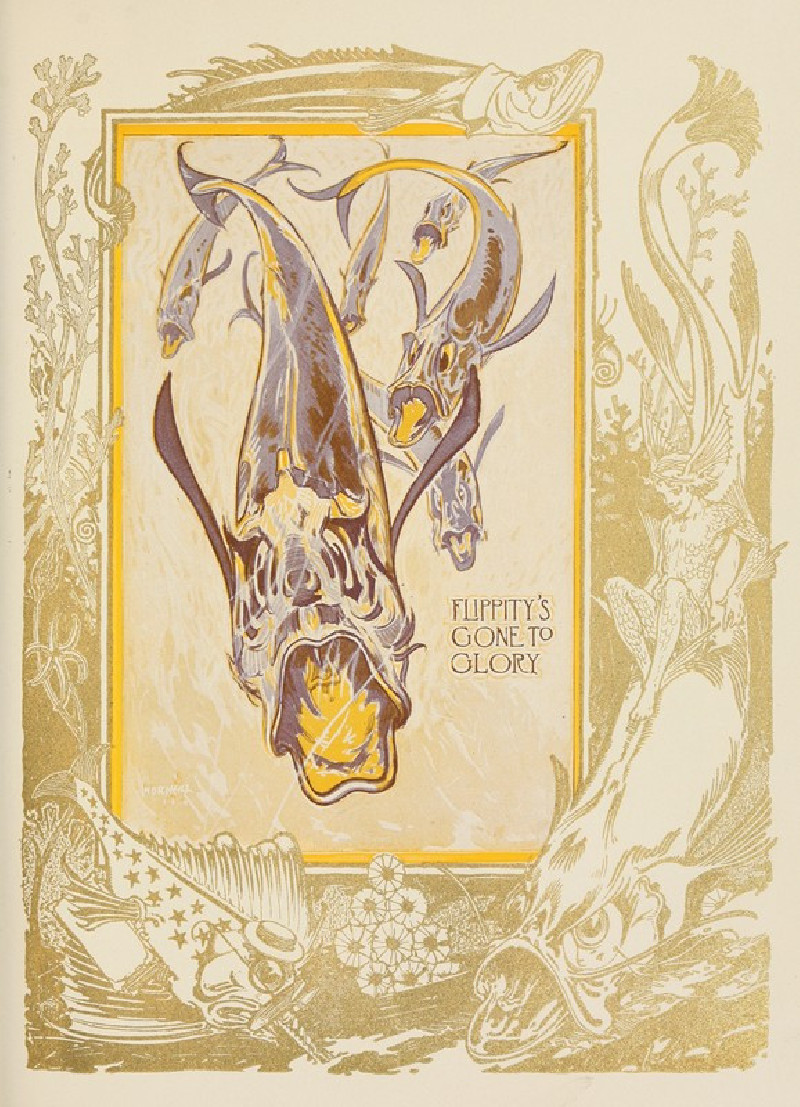After the Shipwreck – Design for an Illustration of Coleridge’s The Rime of the Ancient Mariner (about 1875)
Technique: Giclée quality print
Recommended by our customers
More about this artwork
Gustave Doré's poignant painting, "After the Shipwreck – Design for an Illustration of Coleridge’s The Rime of the Ancient Mariner," masterfully captures the essence of desolation and supernatural wonder characteristic of Samuel Taylor Coleridge's classic poem. Created around 1875, this atmospheric work showcases Doré’s dramatic style and skillful use of monochromatic tones to evoke intense emotions.In the foreground, we see a lone mariner in a small, dilapidated boat rowing through treacherous waters. His attire and posture suggest weariness yet determination. Beside him, occupying a substantial portion of the boat, is a haunting, spectral figure draped in a dark, flowing cloak—the representation of Death or a death-like specter that accompanies the mariner following his tragic voyage.The tumultuous waves around them, masterfully rendered with dynamic swirls and frothy crests, add to the painting's sense of urgent movement and peril. The background features a gloomy, overcast sky, and a sun obscured by mist, enhancing the eerie atmosphere. A sinking ship is faintly visible, symbolizing the doomed fate from which the mariner has narrowly escaped.Doré’s artwork serves not only as an illustration but as a vivid interpretation, delving deep into the poem’s themes of isolation, supernatural intervention, and repentance.
Delivery
Returns
Paul Gustave Louis Christophe Doré (6 January 1832 – 23 January 1883) was a French printmaker, illustrator, painter, comics artist, caricaturist, and sculptor. He is best known for his prolific output of wood-engravings illustrating classic literature, especially those for the Vulgate Bible and Dante's Divine Comedy. These achieved great international success, and he became renowned for printmaking, although his role was normally as the designer only; at the height of his career some 40 block-cutters were employed to cut his drawings onto the wooden printing blocks, usually also signing the image.














































